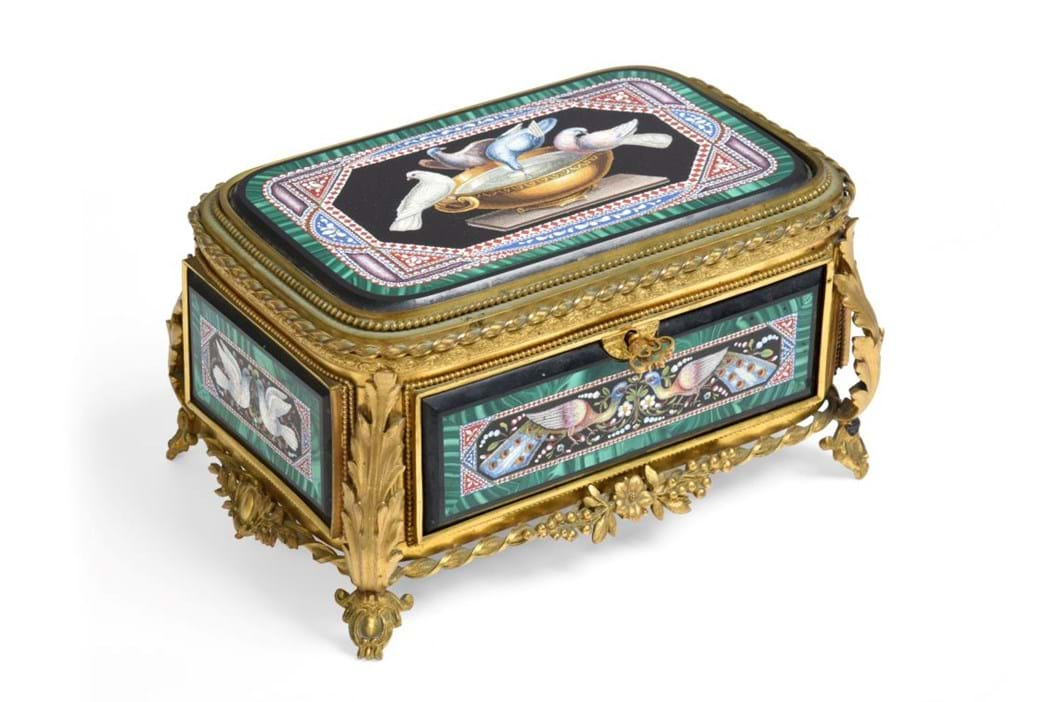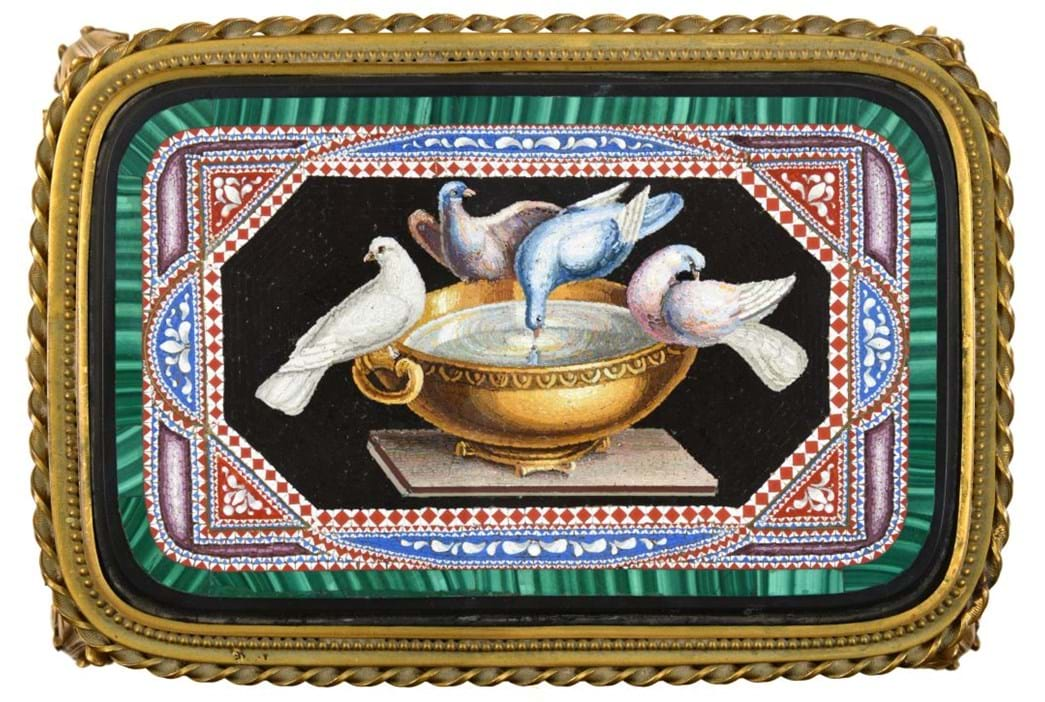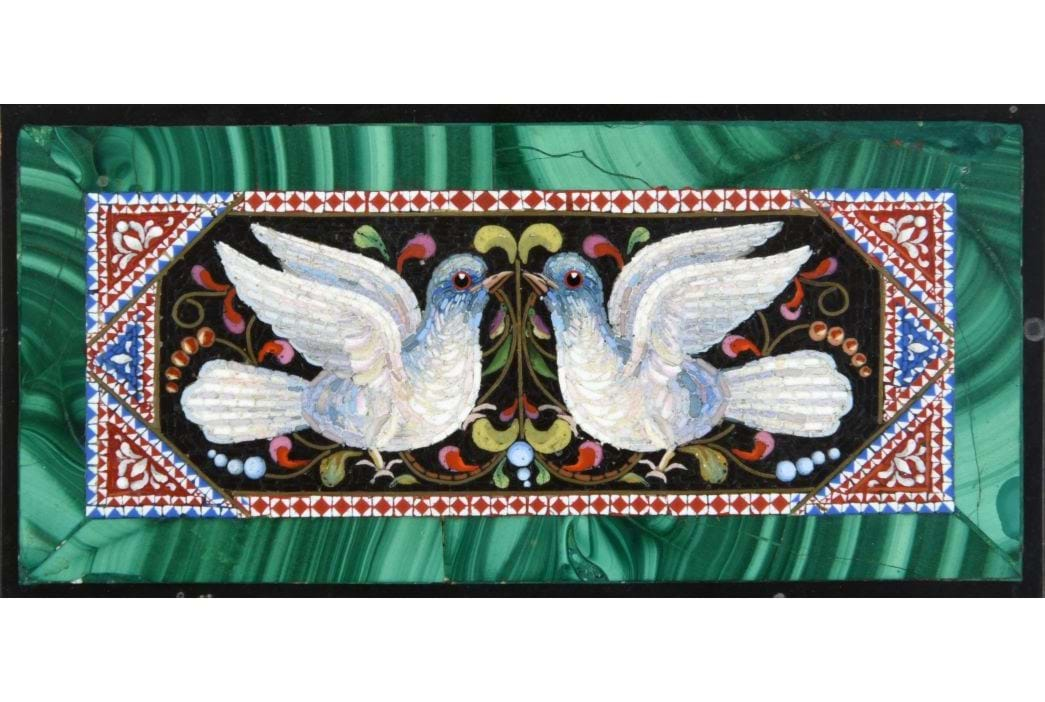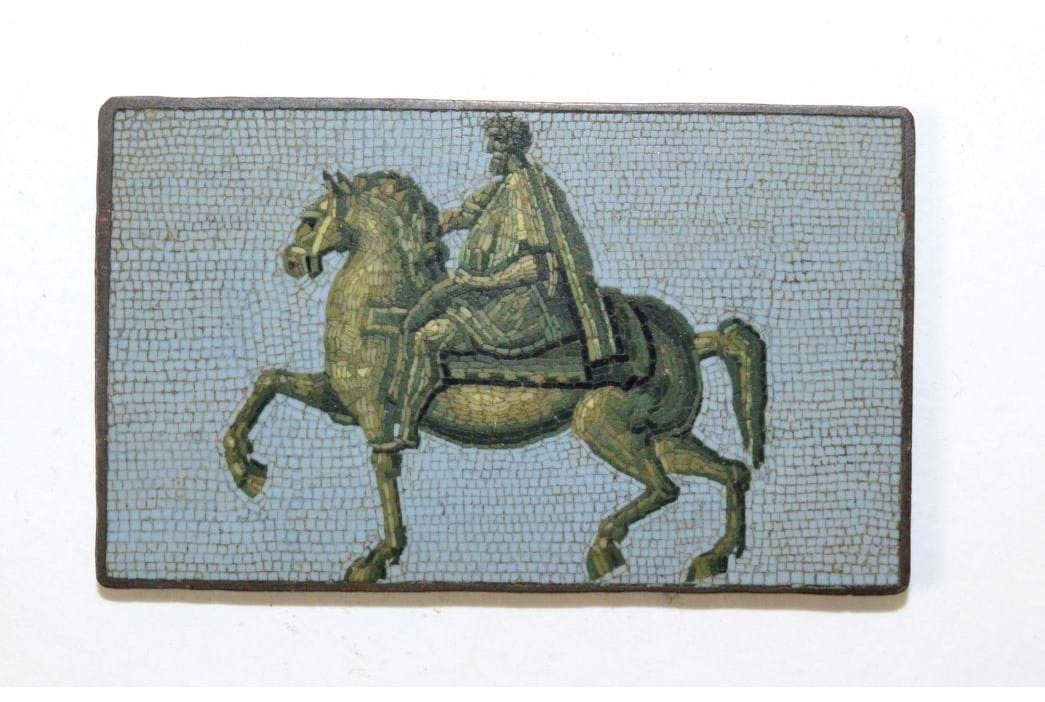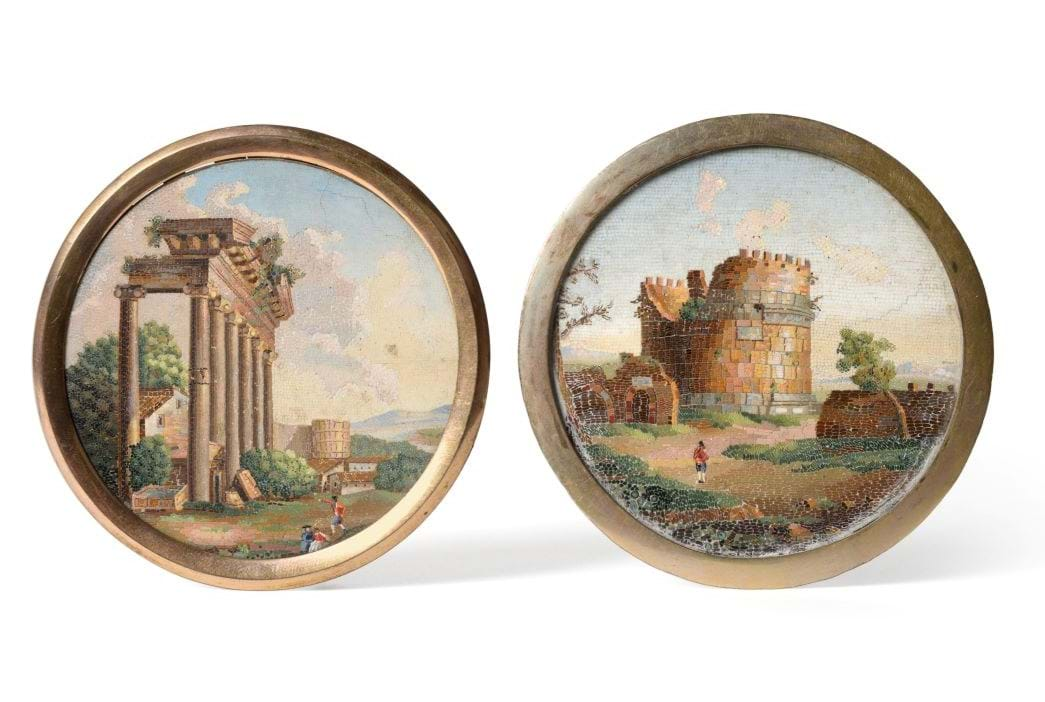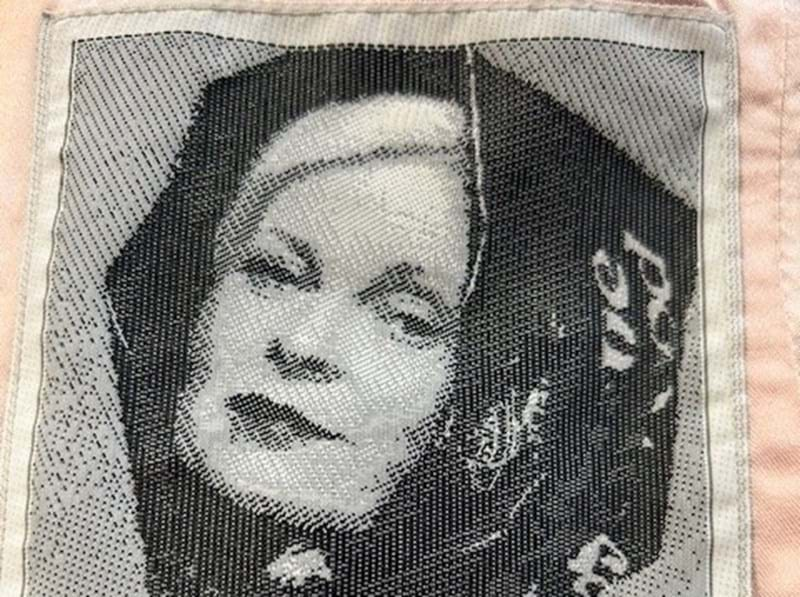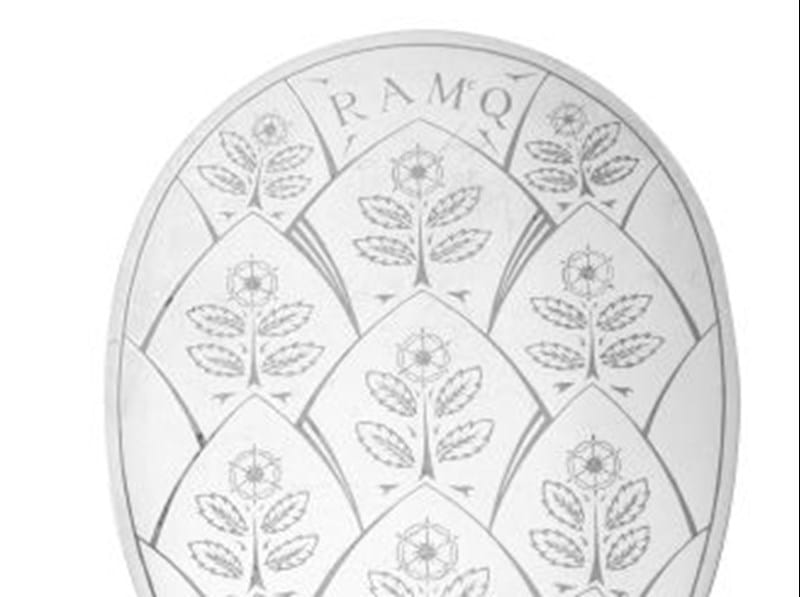Mosaics have been made for thousands of years, decorating the sacred, public and domestic spaces of many of the great ancient civilisations in Egypt, Greece, Byzantium and beyond. The technique, however, was mastered by the Ancient Romans from the 3rd century B.C. to the 5th century A.D., when it became a vital medium in their artistic outpouring and perfect for creating large-scale decorations in villas and temples.
After the fall of the Roman Empire, the art was somewhat forgotten in Rome for centuries before being revived for use in churches in the 16th century. However, it was taken in a new direction in the 18th century, when Vatican craftsmen developed techniques to work on a much smaller scale to produce what we now call micromosaics. Instead of the large square tesserae of clay, glass or stone, coloured glass was pulled into fine strands and shaved to make minute glass tesserae that were then set in a bed of slow drying adhesive before polishing to create elaborate pictures in miniature.
The advent of the micromosaic coincided with the rediscovery of and reinvigorated interest in the Ancient Roman world through archaeological excavations. Great Roman palaces and temples were uncovered revealing masterly mosaics, and ancient sites became must-visit destinations for the aristocratic visitors on their Grand Tour of southern Europe. Micromosaic pictures of ruins and monuments and recreations of ancient mosaics became perfect tourist souvenirs for the wealthy travellers to take home as mementos of their time abroad.
Throughout the 18th and 19th centuries Roman micromosaics became finer and more naturalistic, with advances in techniques leading to extraordinarily painterly pieces executed in a great range of colours. Often set into jewellery, decorative boxes, and tabletops, micromosaics were disseminated throughout Europe and are now much in demand at auction. High prices are achieved for works by some of the great masters such as Giacomo Rafaelli, Fortunato Pio Castellani and Michaelangelo Barberi, however, very few micromosaics are signed or attributable to individual craftsmen. Buyers look out for fine, naturalistic pieces, many of which could be mistaken for a traditional painting at a distance, and attractive schemes set in marble and metal surrounds.
A particularly fine example is coming up in the Summer Fine Sale on 16th July – an Italian Gilt Metal and Micromosaic Casket made in Rome circa 1860. The casket has beautifully wrought peacocks and doves on the four side panels, but the central focus is the lid with its fine depiction of the Doves of Pliny or the Capitoline Doves, one of the most important mosaic motifs. The image of four doves around a water vessel was taken from a 2nd century A.D. mosaic, discovered in the 1730s at Hadrian’s Villa in Tivoli and transferred to the Capitoline Museum in the 1760s. At first believed to be a mosaic described by Pliny, it was actually made after the philosopher’s death and is now thought to have been based on an Ancient Greek mosaic by Sosus of Pergamon. The casket, which is also set with green malachite, is a rare and fine object and exemplifies the art of the micromosaic.


